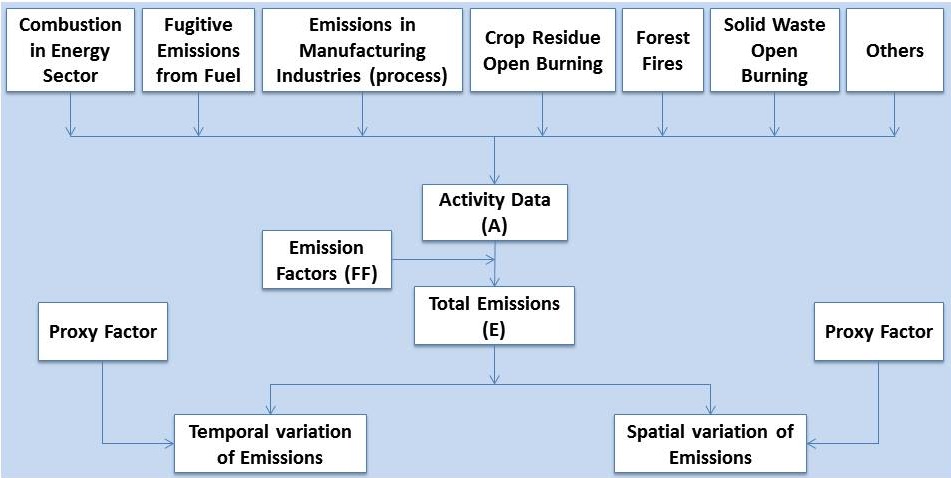Emission Inventory
The accurate estimates of the emissions of ABCs from different sources are a key requirement for the modeling studies and to design effective emission reduction measures. The published emission data on primary and secondary aerosols and ozone precursor gases from various sources, for examples, vehicular exhausts, burning of residential fuels including fossil and biofuels, and open biomass burning from in regions, are very limited. These emissions data carry large uncertainty in a magnitude of 2-6. Emission estimates from open burning are even more uncertain. Emission data with reasonably good spatial and temporal resolutions rarely exist. This poses a big challenge in designing sector- and source-based mitigation measures and technological, financial, or policy measures.
In order to address this challenge, UNEP commissioned a group of experts to prepare a comprehensive emission inventory manual (EIM) that is user friendly, and can be used both as a guide in compiling emission inventories in developed and developing countries, and as a training material for human resource development. The EIM is accompanied by an Excel-based workbook, which can be used for compilation and estimation of ABCs emissions from different sources.
The overall framework of Emission Inventory is as follow
 The purpose of the EIM is to provide a framework for ABCs emissions inventory that is suitable for use in different countries especially in Asia. The ABC EIM places added emphasis on biomass open burning emissions to highlight the importance of this source as well as uncertainties involved in its estimation. This manual also presents methods for temporal and spatial distribution of emissions. It specifically includes emission estimations of black carbon (BC) and organic carbon (OC), which are not addressed in detail by existing manuals.
The purpose of the EIM is to provide a framework for ABCs emissions inventory that is suitable for use in different countries especially in Asia. The ABC EIM places added emphasis on biomass open burning emissions to highlight the importance of this source as well as uncertainties involved in its estimation. This manual also presents methods for temporal and spatial distribution of emissions. It specifically includes emission estimations of black carbon (BC) and organic carbon (OC), which are not addressed in detail by existing manuals.
The spatially and temporally disaggregated regional emission inventories of ABC pollutants by source and/or sector are expected to be established in the future. The results can be further elaborated with modeling tools to (1) develop national/regional level emission scenarios under various socio-economic development and land use scenarios in the medium- and long-term; (2) assess the impacts of ABCs at national/sub-national levels; (3) identify major cost effective mitigation options and technological and policy measures for ABCs emissions and analyze their potential for emission abatement at national/subnational levels in Asia; (4) Identify major adaptation options and measures and analyze their costs and benefits; and (5) Develop national capacity for the above activities.
The manual has also been tested in two case studies of emission inventories developed for Indonesia and Thailand, using the Excel-based tool which can also be applied in emission inventories in other Asian countries. With this experience, the manual encourages inventory compilers to make use of local activity data and emission factors. There is, however, a provision in the ABC EIM that allows use of best available default data, as it has tried to include, to the extent possible, updated emission factors relevant to the region. As new information becomes available, the manual intends to provide future updates and modifications to contribute towards developing better emission inventories.
Using ABC EIM, the emission inventory of ABC precursors of Nepal and Bhutan were compiled from main emission sectors, namely, energy, fugitive emission, manufacturing process industry, agriculture waste burning, forest fires, solid waste open burning, and others sectors including the incineration for pollutants including SO2, NOx, NH3, CO, NMVOC, CO2, CH4, N2O, PM10, PM2.5, BC, and OC. The reports are under process to finalize.
